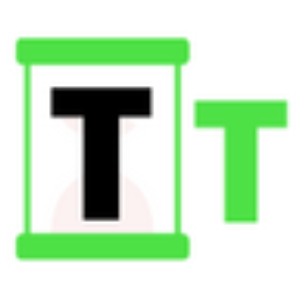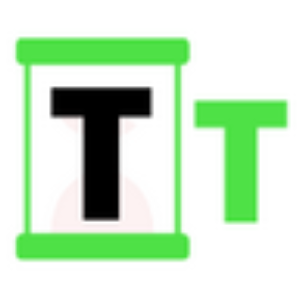Ethereum Staking Share: Unveiling Lido’s Dramatic Decline to 25%
7 min read
BitcoinWorld Ethereum Staking Share: Unveiling Lido’s Dramatic Decline to 25% The dynamic world of decentralized finance (DeFi) is rarely static, and recent developments in the Ethereum staking ecosystem are a testament to this constant evolution. For an extended period, Lido Finance stood as the undisputed leader in liquid staking, commanding a significant portion of the Ethereum staking share . However, a notable shift has emerged, as on-chain analyst Tom Wan recently highlighted a significant decline in Lido’s market share to 25%, marking its lowest point since March 2022. This isn’t merely a statistical blip; it signifies a crucial inflection point for Ethereum’s decentralization efforts and the burgeoning liquid staking landscape. Lido’s Dominance and the Shifting Ethereum Staking Share Lido Finance rapidly ascended to prominence by simplifying Ethereum (ETH) staking, allowing users to participate without the 32 ETH minimum or the technical overhead of running a validator node. Its innovative liquid staking token, stETH, provided liquidity to staked assets, enabling users to earn rewards while still utilizing their capital within DeFi. This compelling value proposition propelled Lido to command an overwhelming Ethereum staking share for years. Yet, the recent data indicates a significant rebalancing, suggesting a maturing market where dominance is increasingly challenged. Why the Shift? Factors Influencing Ethereum Staking Share Dynamics Several converging factors are contributing to the redistribution of the Ethereum staking share . This isn’t a singular event but rather a culmination of market forces and community preferences: Intensified Competition: The liquid staking derivatives (LSD) sector has witnessed an explosion of innovation. Protocols such as Rocket Pool, Frax Finance, and even centralized exchange offerings like Coinbase’s cbETH have emerged as robust alternatives. These competitors often present unique features, varying fee structures, or distinct decentralization profiles, naturally eroding Lido’s previously unchallenged position in the Ethereum staking share . Decentralization Imperative: Lido’s substantial size has long been a point of discussion and concern within the Ethereum community. A single entity holding such a large percentage of staked ETH raises questions about network decentralization and censorship resistance. Influential figures, including Ethereum co-founder Vitalik Buterin, have consistently advocated for a more distributed Ethereum staking share to bolster the network’s resilience. Users are increasingly aligning their staking choices with these decentralization ideals. Evolving Regulatory Landscape: As regulatory clarity slowly emerges in the crypto space, protocols perceived as more centralized or having potential single points of failure may attract increased scrutiny. While Lido has undertaken measures to enhance its decentralization, the sheer scale of its operations might lead some users to diversify their Ethereum staking share across multiple platforms to mitigate perceived risks. User Sophistication and Yield Optimization: The DeFi user base is becoming increasingly sophisticated. While Lido offers competitive yields, many users actively seek out optimized strategies, which might involve exploring alternative protocols that offer slightly higher returns, better integration with specific DeFi protocols, or more flexible reward structures. This pursuit of optimal yield and utility contributes to the rebalancing of the overall Ethereum staking share . The Positive Ripple Effect: A More Diverse Ethereum Staking Landscape A more diversified Ethereum staking share is overwhelmingly viewed as a beneficial development for the network’s long-term health, security, and adherence to its core principles. Over-reliance on a single entity introduces systemic risks, including potential points of failure, governance vulnerabilities, or susceptibility to external pressures. The reduction in Lido’s dominance signifies a healthy maturation of the market, paving the way for a more robust and truly decentralized future for Ethereum. Here’s how this positive shift impacts the ecosystem: Aspect Impact of Diversified Staking Share Network Resilience Distributes validator power more broadly, making the network inherently more robust against attacks, outages, or censorship. A healthier Ethereum staking share enhances overall security. Innovation & Competition Fosters a dynamic environment where liquid staking protocols must continuously innovate to attract and retain users. This drives better features, improved yields, and superior user experiences for those participating in the Ethereum staking share . User Empowerment Provides stakers with a wider array of choices, allowing them to select solutions that align with their specific risk appetite, decentralization preferences, and yield expectations. This empowers individuals to make more informed decisions about their Ethereum staking share . This evolving landscape is a clear indicator of the Ethereum ecosystem’s commitment to its foundational principles. It represents a healthy maturation of the liquid staking market, moving towards a more distributed and resilient future for the Ethereum staking share . Navigating the Future: Opportunities and Challenges for Ethereum Staking Share The rebalancing of the Ethereum staking share presents both strategic challenges and significant opportunities for all participants in the ecosystem. For Lido Finance: The challenge lies in adapting its strategy to a more competitive environment. This could involve further decentralizing its governance, exploring new product offerings, or focusing on niche markets. The opportunity is to shed some of the “too big to fail” scrutiny and innovate with renewed agility, potentially expanding its services across other blockchain networks. For Competing Protocols: This period is a golden opportunity for growth. Protocols that offer genuine decentralization, robust security, and compelling user experiences are well-positioned to capture a larger segment of the Ethereum staking share . However, rapid growth demands rigorous attention to security audits, operational scalability, and effective community governance. For Individual Stakers: The increased choice is a clear benefit, allowing users to align their investments with their values. However, it also necessitates greater due diligence. Understanding the nuances of each protocol’s smart contract risks, decentralization efforts, and long-term viability becomes paramount when deciding where to stake one’s Ethereum staking share . Ultimately, this shift underscores Ethereum’s ongoing journey towards a more robust and censorship-resistant network. The diversification of its Ethereum staking share is a powerful testament to the network’s ability to self-correct and evolve, ensuring its long-term health and vitality in the decentralized landscape. Conclusion: A New Era for Ethereum Staking Share Lido’s significant decline in Ethereum staking share to 25% marks a pivotal moment, signaling a healthy and maturing liquid staking ecosystem. Far from being a negative indicator for Ethereum, this rebalancing fosters increased competition, drives innovation, and, most importantly, significantly enhances the network’s decentralization and resilience. It empowers users with more diverse choices and reinforces the core tenets of distributed control that are fundamental to the entire DeFi space. As the market continues its dynamic evolution, we can anticipate further shifts, all contributing to a more robust and truly decentralized future for Ethereum. Frequently Asked Questions (FAQs) Q1: What is Ethereum staking and why is Lido’s share important? A1: Ethereum staking involves locking up ETH to support the network’s security and operations, earning rewards in return. Lido’s share is important because it represents a significant portion of staked ETH, and its dominance impacts the network’s decentralization. A high concentration with one entity can raise concerns about single points of failure. Q2: What is “liquid staking” and how does Lido facilitate it? A2: Liquid staking allows users to stake their ETH while receiving a liquid token (like Lido’s stETH) in return. This token can then be used in other DeFi protocols, maintaining liquidity. Lido facilitates this by pooling user ETH and running validators on their behalf, issuing stETH as a representation of staked assets. Q3: Why is a diversified Ethereum staking share considered a positive development? A3: A diversified Ethereum staking share reduces the risk of centralization. If too much ETH is staked with one provider, it could potentially compromise the network’s censorship resistance, governance, or security. More participants mean a stronger, more resilient, and truly decentralized network. Q4: What alternatives to Lido exist for Ethereum staking? A4: Several alternatives offer liquid staking solutions, each with different models and decentralization levels. Prominent examples include Rocket Pool (rETH), Frax Finance (sfrxETH), and even offerings from centralized exchanges like Coinbase (cbETH). Users should research each option to find one that aligns with their preferences. Q5: How does this shift impact individual Ethereum stakers? A5: For individual stakers, this shift primarily means more choices and potentially better terms. While it requires more due diligence to select a protocol, it empowers users to pick a solution that best fits their risk profile, decentralization ideals, and desired yield, ultimately leading to a healthier overall Ethereum staking share ecosystem. Q6: Will Lido continue to be a major player in Ethereum staking? A6: Despite the decline in its Ethereum staking share , Lido remains a significant and influential protocol. Its established infrastructure, liquidity, and brand recognition ensure it will continue to be a major player. However, it will need to adapt to the increasingly competitive and decentralization-focused market to maintain its standing. If you found this article insightful, consider sharing it with your network! Help us spread awareness about the crucial shifts shaping the Ethereum staking landscape and the future of decentralized finance. Your share helps others stay informed and contribute to a more educated crypto community. To learn more about the latest Ethereum trends, explore our article on key developments shaping Ethereum staking dynamics . This post Ethereum Staking Share: Unveiling Lido’s Dramatic Decline to 25% first appeared on BitcoinWorld and is written by Editorial Team

Source: Bitcoin World



